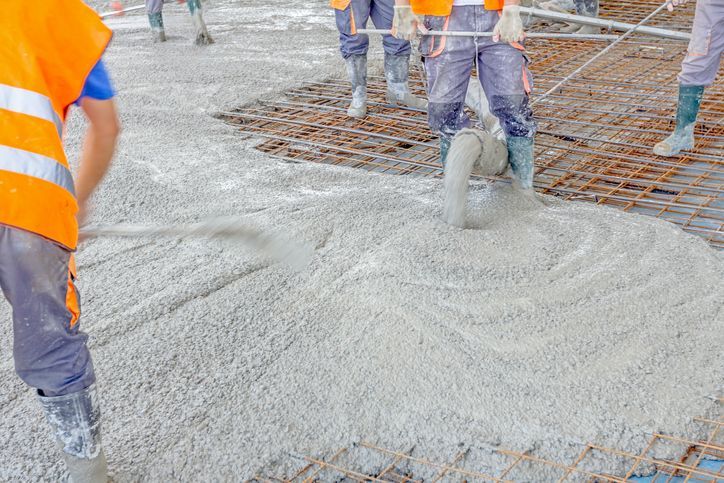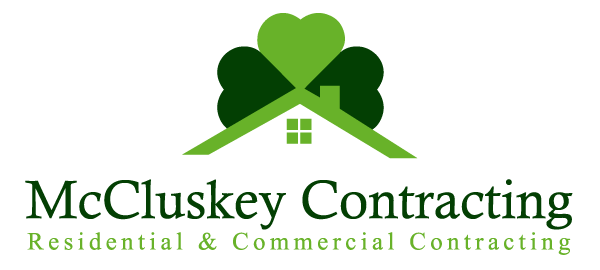Why You Should Have Your Concrete Pumped in vs Poured

When it comes to using concrete for construction projects, there are two main methods of placement - pumping and pouring. Pouring is a prevalent method and one you are likely familiar with, but pumping is a method that is becoming increasingly popular for a variety of reasons.
Pumping concrete involves using specialized equipment to transfer the mixture through pipes or hoses to the desired location. On the other hand, pouring concrete is a more traditional method that involves manually spreading and leveling the mix in place.
Both methods have advantages and disadvantages, but here are some reasons why pumping concrete may be more beneficial for your project.
Benefits of Pumping Concrete
There are a variety of benefits to pumping concrete for a project, including:
Faster Placement
One of the most significant benefits of pumping concrete is its speed. Large quantities of concrete can be placed in a short amount of time using specialized pumps. This is especially useful for larger construction projects where time is of the essence. With this method, you can work more efficiently, decrease downtime, and ensure that the concrete can be placed no matter the time of day, job site conditions, or the weather.
The constant flow and precise placement of pumped concrete also result in a more efficient and consistent pour, reducing the need for manual labor and potential delays.
Access to Hard-to-Reach Areas
Pumping concrete allows for easier access to hard-to-reach areas of a construction site. The equipment can be set up at a distance, and the concrete can be pumped to its destination. This eliminates the need for heavy machinery or workers to maneuver around the site, reducing potential safety hazards and disruptions.
Reduced Labor and Material Costs
With pumping, less manual labor is required compared to pouring concrete. This reduces the number of workers needed on site, ultimately cutting down labor costs. Additionally, the precise placement and minimal spillage of pumped concrete result in less waste, saving on material costs.
Improves on the Job Safety
Pumping concrete is also a safer option compared to pouring manually. The use of pumps eliminates the need for the trucks to be close to embankments, excavations, or other dangerous obstructions on the job site. This also helps to reduce the traffic on a job site for more efficiency and safety. Additionally, pumped concrete has less potential for accidents or spills on site.
Better Quality Control
Pumping allows for better quality control during the concrete placement process. The constant flow and pressure ensure the mixture is evenly distributed and compacted, resulting in a more robust and more durable end product. This is especially beneficial for projects requiring high precision, such as creating foundations or structural elements.
When pumped, concrete is directly placed rather than rehandled, which boosts the quality of the concrete. This method also does not require special mixes and also eliminates the need for excess water, helping to prevent cracking.
Offers Versatility and Diversity
Concrete pumping offers versatility and diversity in terms of the type of concrete that can be used. Different types of pumps can be utilized depending on the mixture's consistency, strength, or size needed for a project. This allows for customization and adaptation to suit different construction needs.
Environmentally Friendly
Using concrete pumps also has environmental benefits compared to pouring concrete. The precision and efficiency of concrete pumping results in less waste. Additionally, since the trucks don't need to be driven through the job site and can instead pump the concrete in from the curb, there is minimal disturbance to the surrounding environment.
Are There Any Disadvantages to Pumping In Concrete?
While there are many advantages to pumping concrete, it is essential to note that issues can occur, such as a blockage in the pipeline or segregation and bleeding of the concrete mix. However, with proper maintenance and skilled operators, these issues can be minimized or avoided altogether.
Additionally, the initial cost of using specialized pumping equipment may be higher than traditional pouring methods. However, when considering the benefits and long-term cost savings, pumping concrete can be a more cost-effective option in the end.
Which Method Should I Choose?
Ultimately, deciding between pumping and pouring concrete will depend on your project's specific needs. However, pumping may be the better option for larger projects with tight deadlines, hard-to-reach areas, and a need for precision and quality control. It can save time, money, and effort while also providing a safer and more environmentally friendly alternative.
In conclusion, while both methods have their own advantages, pumping concrete offers numerous benefits that make it a more favorable option for many construction projects.
From faster placement and easier access to reduced costs and better quality control, pumping concrete can be a game-changer for your next project. Consider incorporating this method into your construction plans to reap its many benefits.
Do I Need a Professional for My Concrete Construction Project?
Regardless of your chosen method, having a professional handle your concrete construction project is crucial. These experts can assess your needs and determine the most suitable way for your specific project. With their expertise and specialized equipment, they can ensure that the concrete is placed efficiently, accurately, and safely.
When you attempt to complete concrete construction, you risk potential mistakes, delays, and safety hazards. Hiring a professional may require an initial investment, but it will ultimately save you time, money, and stress in the long run.
Work With McCluskey Contracting for Your Concrete Needs
At McCluskey Contracting, we offer professional and reliable concrete pumping services for all construction needs. Our experienced team uses top-of-the-line equipment to ensure efficient and precise placement of your concrete. We are committed to delivering high-quality results while prioritizing safety and environmental responsibility.
We offer concrete construction services to various clients, including commercial, industrial, residential, and driveway replacement. We can create concrete steps, walkways, driveways, retaining walls, and more! We also offer exposed aggregate finish, swirl, stamped, or broom finish and will seal the concrete to provide protection and enhance your chosen finish.
Contact us today to discuss your project and see how we can help make it a success.
You might also like
McCluskey Contracting Concrete Blog



